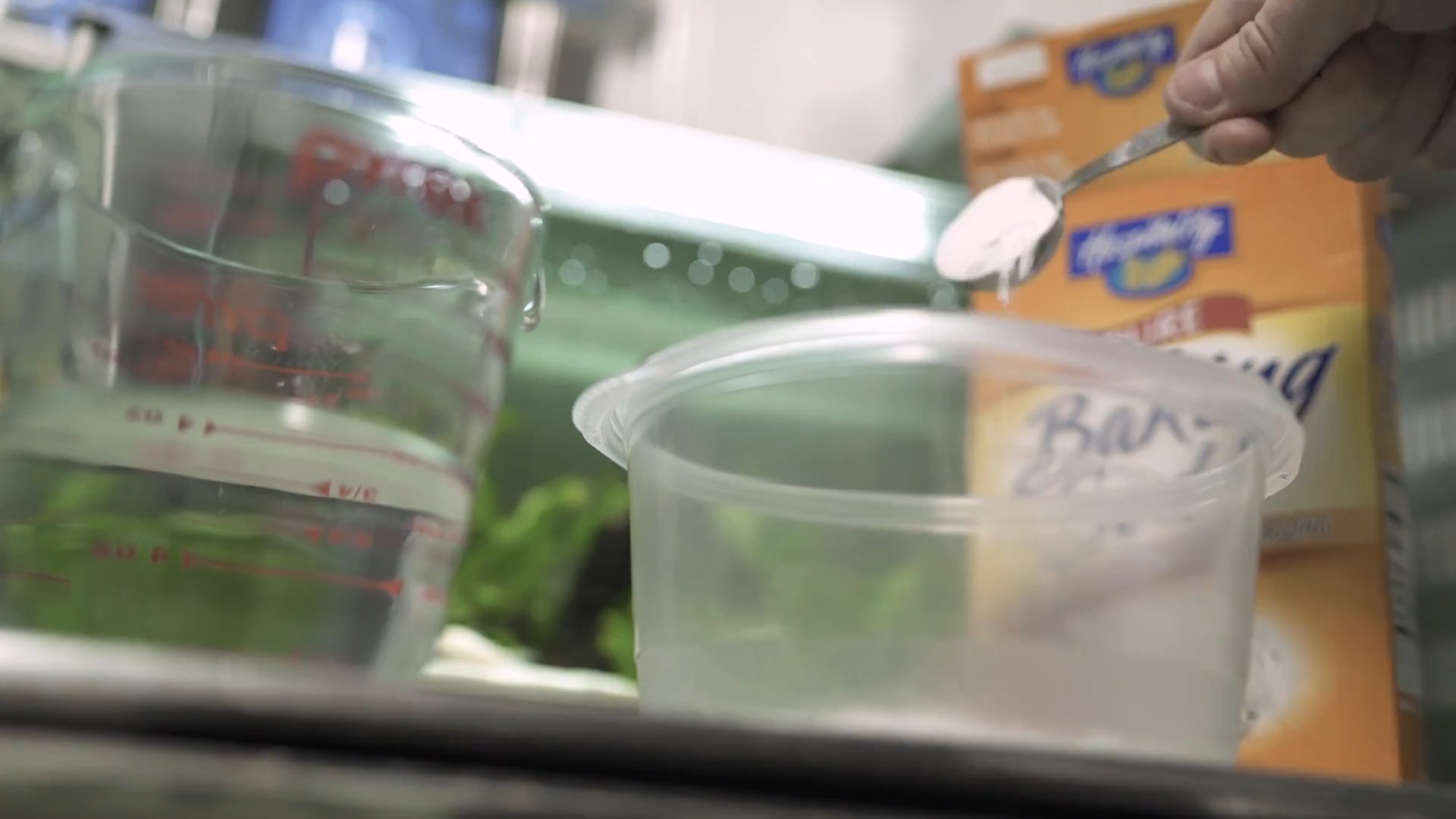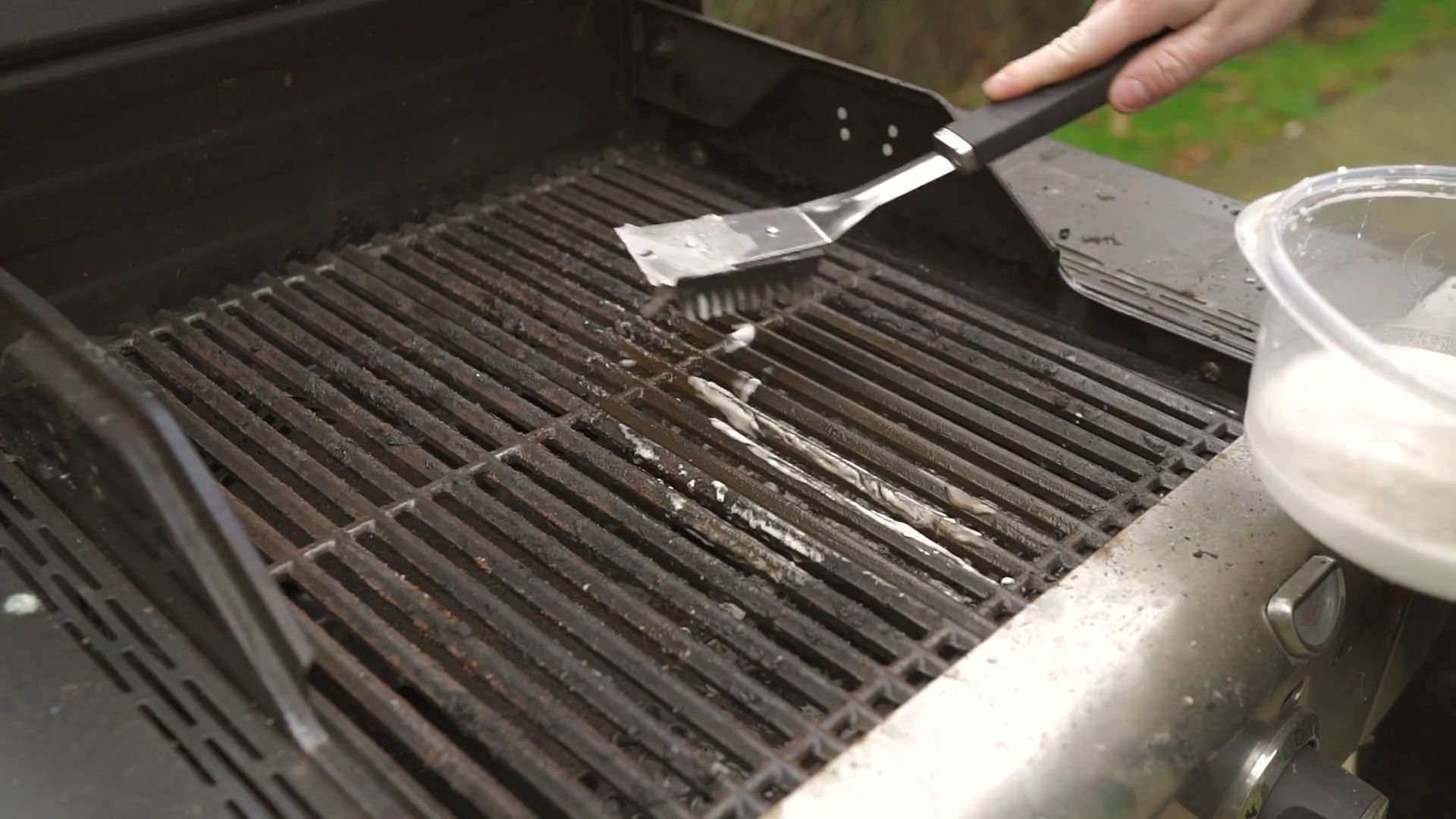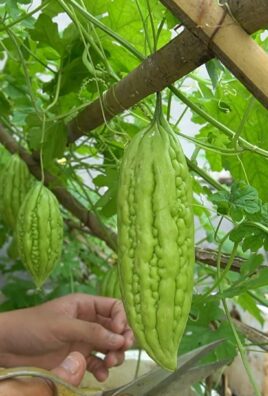Growing Bush Beans in Pots: Imagine stepping onto your balcony or into your small backyard and harvesting a handful of fresh, crisp bush beans, ready to be tossed into a salad or steamed for a delicious side dish. Sounds idyllic, right? Well, it’s more achievable than you might think, even without acres of land! For centuries, container gardening has allowed people to cultivate their own food, from the hanging gardens of Babylon to the humble window boxes of today. It’s a tradition rooted in resourcefulness and a desire to connect with nature, no matter the limitations of space.
But let’s be honest, sometimes gardening feels overwhelming. You see those picture-perfect gardens online and wonder, “How do they do it?” That’s where simple, effective DIY tricks come in. Growing bush beans in pots is a fantastic way to enjoy fresh produce, even if you’re short on space or time. This guide will provide you with easy-to-follow steps and insider tips to ensure a bountiful harvest. We’ll cover everything from choosing the right pot and soil to watering and pest control, making the whole process a breeze. So, ditch the grocery store beans and get ready to experience the joy of growing your own! I’m excited to share these tips with you!

Growing Bush Beans in Containers: A Beginner’s Guide
Hey there, fellow gardening enthusiasts! I’m so excited to share my experience with growing bush beans in containers. It’s a fantastic way to enjoy fresh, homegrown beans even if you don’t have a sprawling backyard. Trust me, it’s easier than you think, and the reward of snapping those crisp, delicious beans right off the plant is totally worth it. Let’s dive in!
Choosing the Right Container and Soil
Before we get our hands dirty, let’s talk about the essentials: the container and the soil. These are crucial for healthy bean plants.
* Container Size: Bush beans don’t need a ton of space, but they do need enough room for their roots to spread. I’ve found that a container that’s at least 12 inches in diameter and 12 inches deep works perfectly. You can use plastic pots, terracotta pots, or even repurposed containers like large buckets or tubs. Just make sure whatever you choose has drainage holes!
* Drainage is Key: Seriously, don’t skip this step. Beans hate sitting in soggy soil. If your container doesn’t have drainage holes, drill a few in the bottom.
* Soil Matters: Don’t use garden soil straight from your yard. It’s often too heavy and doesn’t drain well in containers. Instead, opt for a high-quality potting mix. I like to use a mix that’s specifically formulated for vegetables, as it usually contains added nutrients that beans will love. You can also amend a general potting mix with compost for extra richness.
Planting Your Bush Beans
Now for the fun part: planting! This is where we actually get to see our garden dreams start to take shape.
1. Gather Your Supplies: You’ll need your container, potting mix, bush bean seeds, and a watering can.
2. Fill the Container: Fill your container with potting mix, leaving about an inch or two of space at the top. This makes watering easier and prevents soil from spilling over.
3. Sow the Seeds: Bush beans are pretty easy to germinate. I usually plant the seeds about 1 inch deep and 2-3 inches apart. You can plant several seeds in a single container, depending on its size. A 12-inch container can comfortably hold 4-5 plants.
4. Water Gently: After planting, water the soil gently until it’s evenly moist. Be careful not to overwater, as this can cause the seeds to rot.
5. Find a Sunny Spot: Bush beans need at least 6-8 hours of sunlight per day to thrive. Place your container in a sunny location, such as a patio, balcony, or windowsill.
6. Be Patient: Germination usually takes about 7-10 days, depending on the temperature and moisture levels. Keep the soil consistently moist during this time.
Caring for Your Bush Bean Plants
Once your bean plants have sprouted, it’s time to provide them with the care they need to grow strong and produce a bountiful harvest.
* Watering: Water your bean plants regularly, especially during hot, dry weather. The soil should be consistently moist, but not waterlogged. I usually water deeply whenever the top inch of soil feels dry to the touch.
* Fertilizing: Bush beans are relatively light feeders, but they still benefit from occasional fertilization. I like to use a balanced liquid fertilizer, diluted to half strength, every 2-3 weeks. You can also amend the soil with compost tea for a natural boost.
* Support (Optional): Bush beans are generally self-supporting, but if your plants start to get top-heavy, you can provide them with some support. A small tomato cage or a few stakes can help keep them upright.
* Pest Control: Keep an eye out for common bean pests, such as aphids, bean beetles, and spider mites. If you spot any pests, you can try spraying them with insecticidal soap or neem oil. I prefer to use organic pest control methods whenever possible.
* Weeding: Keep the container free of weeds, as they can compete with your bean plants for nutrients and water. Hand-pull any weeds that pop up.
Harvesting Your Bush Beans
The moment we’ve all been waiting for: harvesting! This is the most rewarding part of growing bush beans.
1. Timing is Everything: Bush beans are usually ready to harvest about 50-60 days after planting. The beans should be firm, plump, and easy to snap off the plant.
2. Harvest Regularly: Harvest your beans regularly, every few days, to encourage the plants to produce more. Overripe beans can become tough and stringy.
3. Snap Them Off: To harvest, simply snap the beans off the plant at the stem. Be gentle to avoid damaging the plant.
4. Enjoy Your Harvest: Freshly harvested bush beans are delicious steamed, sautéed, or added to salads and soups. You can also freeze or can them for later use.
Troubleshooting Common Problems
Even with the best care, you might encounter a few problems along the way. Here are some common issues and how to address them:
* Yellowing Leaves: This can be caused by overwatering, underwatering, or nutrient deficiencies. Check the soil moisture and adjust your watering accordingly. If the problem persists, try fertilizing with a balanced fertilizer.
* Lack of Flowers: This can be caused by insufficient sunlight or excessive nitrogen in the soil. Make sure your plants are getting enough sunlight and avoid using fertilizers that are high in nitrogen.
* Pest Infestations: As mentioned earlier, keep an eye out for common bean pests and treat them promptly with insecticidal soap or neem oil.
* Disease: Bush beans can be susceptible to certain diseases, such as powdery mildew and bean rust. To prevent disease, provide good air circulation and avoid overhead watering. If you spot any signs of disease, remove the affected leaves and treat the plants with a fungicide.
Choosing Your Bush Bean Variety
There are so many different varieties of bush beans to choose from, each with its own unique flavor and characteristics. Here are a few of my favorites:
* Blue Lake Bush: A classic variety with excellent flavor and texture.
* Contender: An early-maturing variety that’s perfect for short growing seasons.
* Provider: A high-yielding variety that’s resistant to many common bean diseases.
* Roma II: A flat-podded variety with a rich, buttery flavor.
* Royal Burgundy: A beautiful purple-podded variety that turns green when cooked.
Experiment with different varieties to find the ones you like best!
Extending Your Harvest
Want to keep those beans coming all season long? Here are a few tips for extending your harvest:
* Succession Planting: Plant a new batch of seeds every 2-3 weeks to ensure a continuous supply of beans.
* Deadheading: Remove any spent flowers to encourage the plants to produce more beans.
* Proper Watering and Fertilizing: Keep your plants well-watered and fertilized to maximize their productivity.
Saving Seeds (Optional)
If you want to save seeds from your bush bean plants for next year, here’s how:
1. Allow Some Beans to Mature: Let a few beans on each plant mature completely and dry out on the vine.
2. Harvest the Dry Beans: Once the beans are completely dry, harvest them and remove them from the pods.
3. Store the Seeds: Store the seeds in an airtight container in a cool, dry place.
Final Thoughts
Growing bush beans in containers is a rewarding and enjoyable experience. With a little bit of care and attention, you can enjoy a bountiful harvest of fresh, homegrown beans all season long. So, grab your seeds, get your hands dirty, and start growing! Happy gardening!

Conclusion
So, there you have it! Growing bush beans in pots is not only achievable, but it’s also a remarkably rewarding experience. We’ve walked through the simple steps, from selecting the right pot and soil to nurturing your plants and harvesting your bounty. But why should you embrace this DIY trick?
First and foremost, it democratizes gardening. No sprawling backyard? No problem! A sunny balcony, patio, or even a well-lit windowsill can become your personal bean farm. This accessibility makes fresh, homegrown produce available to everyone, regardless of their living situation. Imagine the satisfaction of snipping off crisp, tender bush beans just minutes before adding them to your dinner plate. That’s the power of container gardening.
Secondly, growing bush beans in pots offers unparalleled control. You dictate the soil quality, watering schedule, and pest management, ensuring your plants receive optimal care. This level of control often translates to healthier, more productive plants compared to in-ground gardening, where you’re at the mercy of the existing soil and environmental conditions.
Thirdly, it’s a fantastic learning experience. Gardening is a journey of discovery, and growing bush beans in pots provides a hands-on opportunity to learn about plant life cycles, soil science, and sustainable practices. It’s a chance to connect with nature, de-stress, and cultivate a deeper appreciation for the food we eat.
But the benefits don’t stop there. Consider these variations to elevate your container gardening game:
* **Succession Planting:** Plant new seeds every few weeks to ensure a continuous harvest throughout the growing season.
* **Companion Planting:** Pair your bush beans with beneficial herbs like rosemary or thyme to deter pests and enhance flavor. Marigolds are also excellent companions, adding a splash of color and repelling nematodes.
* **Vertical Gardening:** Utilize trellises or stakes to support your bush beans, maximizing space and creating a visually appealing display. While bush beans are naturally compact, providing some support can prevent them from sprawling and becoming overcrowded.
* **Heirloom Varieties:** Experiment with different heirloom bush bean varieties to discover unique flavors and colors. Some popular choices include ‘Blue Lake Bush,’ ‘Contender,’ and ‘Provider.’
* **Fertilizer Experimentation:** Try different organic fertilizers, such as compost tea or fish emulsion, to see which one yields the best results for your plants. Remember to follow the instructions on the fertilizer packaging carefully.
We wholeheartedly encourage you to try growing bush beans in pots. It’s a simple, satisfying, and sustainable way to enjoy fresh, homegrown produce. Don’t be afraid to experiment, adapt, and learn from your experiences.
And most importantly, we want to hear about your journey! Share your photos, tips, and challenges in the comments below. Let’s build a community of container gardeners and inspire others to embrace the joy of growing their own food. What variety did you choose? What challenges did you face? What successes did you celebrate? Your experiences can help others succeed in their own container gardening endeavors. So, get your hands dirty, plant those seeds, and let the growing begin!
Frequently Asked Questions (FAQ)
What is the best pot size for growing bush beans?
The ideal pot size for growing bush beans is at least 12 inches in diameter and 12 inches deep. This provides ample space for the roots to develop and allows for proper drainage. You can use larger pots if you prefer, but avoid pots that are too small, as they can restrict root growth and lead to stunted plants. A five-gallon bucket works well.
What type of soil should I use for growing bush beans in pots?
Use a well-draining potting mix specifically formulated for containers. Avoid using garden soil, as it can become compacted in pots and hinder drainage. A good potting mix will contain a blend of peat moss, perlite, and vermiculite, which provides excellent aeration and water retention. You can also amend your potting mix with compost to add nutrients and improve soil structure.
How often should I water my bush beans in pots?
Water your bush beans regularly, especially during hot, dry weather. The frequency of watering will depend on the weather conditions, the size of the pot, and the type of potting mix you’re using. Check the soil moisture by sticking your finger about an inch into the soil. If it feels dry, it’s time to water. Water deeply until water drains out of the bottom of the pot. Avoid overwatering, as this can lead to root rot.
How much sunlight do bush beans need?
Bush beans need at least 6-8 hours of direct sunlight per day to thrive. Choose a sunny location for your pots, such as a balcony, patio, or windowsill that receives plenty of sunlight. If you don’t have enough sunlight, you can supplement with grow lights.
Do I need to fertilize my bush beans?
Yes, bush beans benefit from regular fertilization. Use a balanced fertilizer, such as a 10-10-10 or 5-10-5, according to the instructions on the packaging. You can also use organic fertilizers, such as compost tea or fish emulsion. Fertilize every 2-3 weeks during the growing season.
What are some common pests and diseases that affect bush beans?
Common pests that affect bush beans include aphids, bean beetles, and spider mites. You can control these pests with insecticidal soap, neem oil, or by handpicking them off the plants. Common diseases that affect bush beans include powdery mildew and bean rust. You can prevent these diseases by providing good air circulation, avoiding overhead watering, and using disease-resistant varieties.
When should I harvest my bush beans?
Harvest your bush beans when the pods are firm, plump, and about the size of your finger. The beans inside the pods should be small and tender. Harvest regularly to encourage continued production. Overripe beans will be tough and stringy.
Can I grow bush beans indoors?
Yes, you can grow bush beans indoors, but you’ll need to provide them with adequate light. Place your pots near a sunny window or use grow lights to supplement the natural light. You’ll also need to pollinate the flowers by hand, using a small brush to transfer pollen from one flower to another.
What are some good companion plants for bush beans?
Good companion plants for bush beans include marigolds, rosemary, thyme, and nasturtiums. Marigolds repel nematodes, while rosemary and thyme deter pests. Nasturtiums attract aphids away from the bean plants.
Can I save seeds from my bush beans?
Yes, you can save seeds from your bush beans, but only if you’re growing heirloom varieties. Hybrid varieties will not produce true-to-type seeds. To save seeds, allow the pods to dry completely on the plant. Once the pods are dry and brittle, shell the beans and store them in an airtight container in a cool, dry place.





Leave a Comment